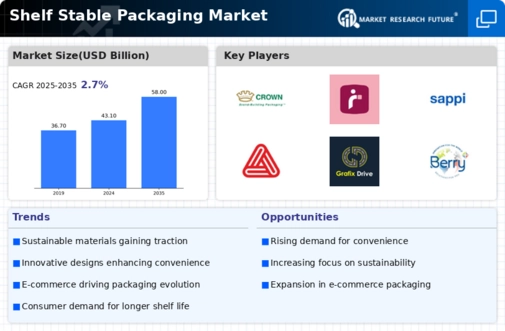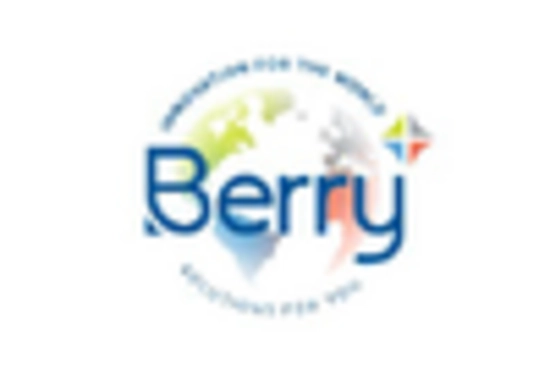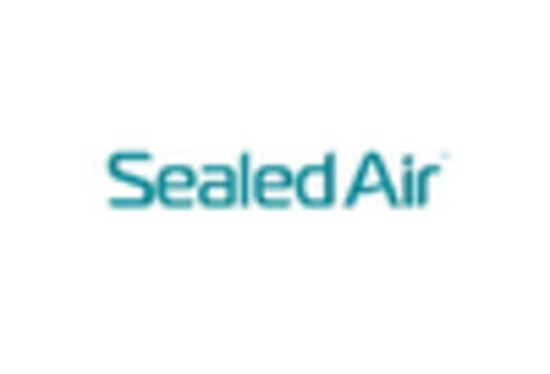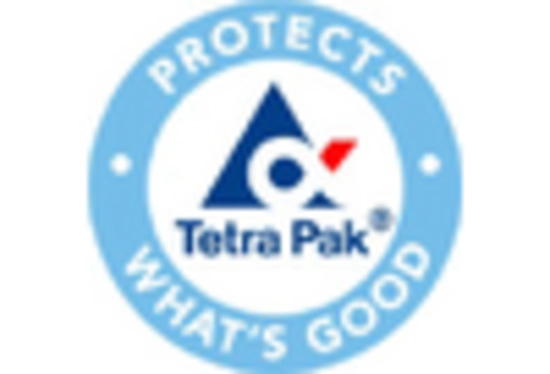Health and Wellness Trends
The growing focus on health and wellness among consumers is a pivotal driver in the Shelf Stable Packaging Market. As individuals become more health-conscious, there is a rising demand for nutritious, shelf-stable food options that align with their dietary preferences. This trend is supported by market data indicating that the health food segment is anticipated to expand at a rate of 5% annually. Manufacturers are increasingly investing in packaging that not only preserves the nutritional value of products but also communicates health benefits effectively. Consequently, the Shelf Stable Packaging Market is likely to see an influx of products that cater to health-oriented consumers, thereby enhancing market growth.
Rising Demand for Convenience Foods
The increasing consumer preference for convenience foods is a notable driver in the Shelf Stable Packaging Market. As lifestyles become busier, consumers are gravitating towards ready-to-eat meals and snacks that require minimal preparation. This trend is reflected in market data, which indicates that the convenience food segment is projected to grow at a compound annual growth rate of approximately 4.5% over the next five years. The demand for shelf-stable packaging solutions is likely to rise as manufacturers seek to meet consumer needs for portability and ease of use. Consequently, the Shelf Stable Packaging Market is expected to witness a surge in innovative packaging designs that enhance product longevity while ensuring convenience.
Expansion of E-commerce and Online Retail
The rapid expansion of e-commerce and online retail platforms is significantly influencing the Shelf Stable Packaging Market. As more consumers turn to online shopping for their grocery needs, the demand for packaging that can withstand the rigors of shipping and handling is increasing. Market data suggests that e-commerce sales in the food sector are expected to grow by over 20% annually, necessitating robust and reliable shelf-stable packaging solutions. This shift not only enhances product accessibility but also drives innovation in packaging materials and designs, ensuring that products remain fresh and intact during transit. Thus, the Shelf Stable Packaging Market is poised for growth as it adapts to the evolving retail landscape.
Regulatory Compliance and Food Safety Standards
Stringent regulatory compliance and food safety standards are critical drivers in the Shelf Stable Packaging Market. Governments worldwide are implementing rigorous regulations to ensure food safety and quality, which directly impacts packaging requirements. The need for packaging that meets these standards is paramount, as it ensures product integrity and consumer safety. Market data indicates that the food safety packaging market is projected to grow by approximately 6% annually, driven by these regulatory demands. As a result, the Shelf Stable Packaging Market is compelled to innovate and adopt advanced materials and technologies that comply with safety regulations, thereby fostering consumer trust and market growth.
Sustainability and Eco-friendly Packaging Solutions
The increasing emphasis on sustainability and eco-friendly packaging solutions is a significant driver in the Shelf Stable Packaging Market. Consumers are becoming more environmentally conscious, leading to a demand for packaging that minimizes environmental impact. Market data reveals that the sustainable packaging segment is expected to grow at a rate of 7% annually, as brands seek to align with consumer values. This trend is prompting manufacturers to explore biodegradable and recyclable materials for shelf-stable packaging. Consequently, the Shelf Stable Packaging Market is likely to experience a shift towards more sustainable practices, which not only meet consumer expectations but also contribute to a healthier planet.

















Leave a Comment